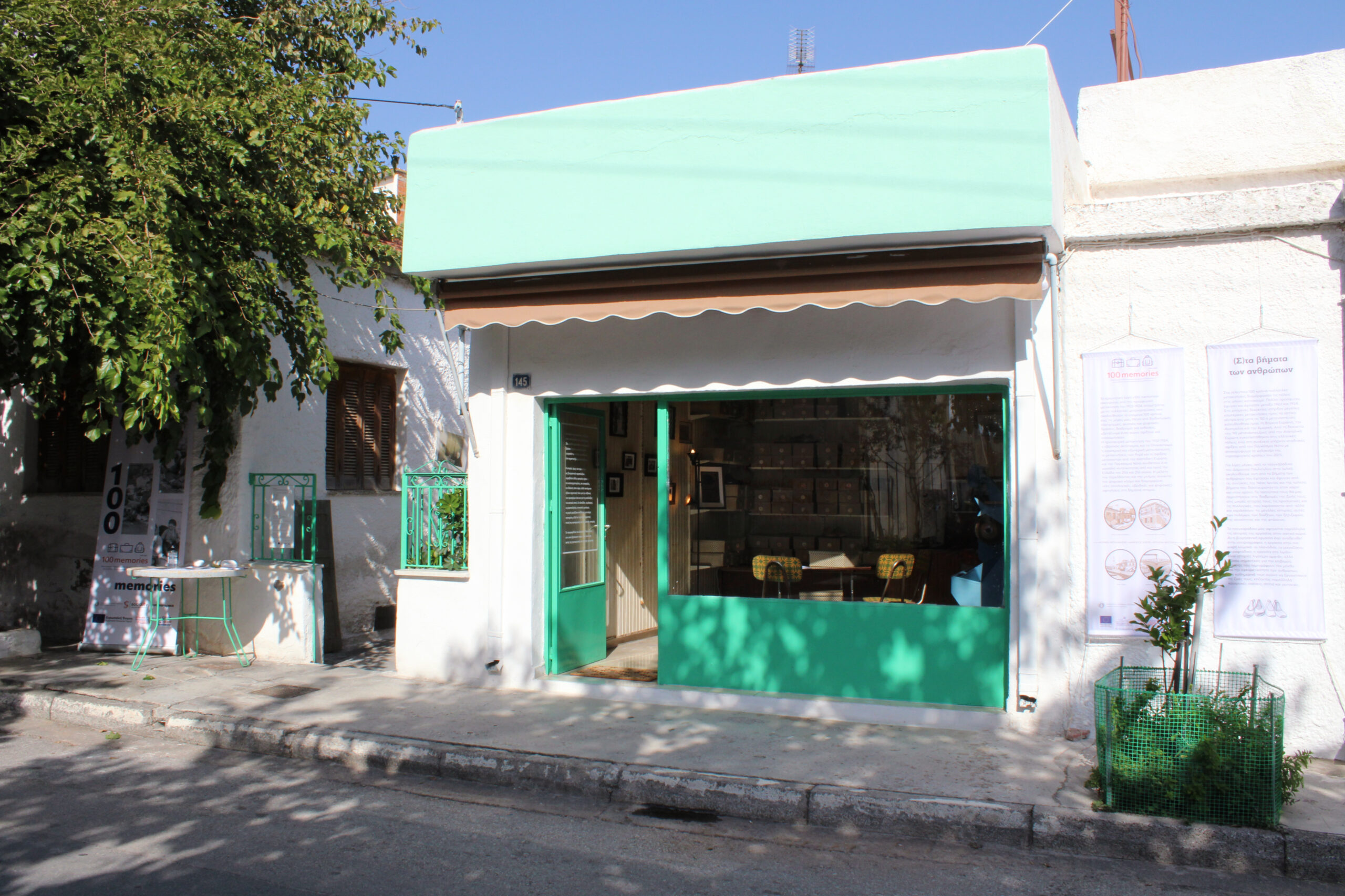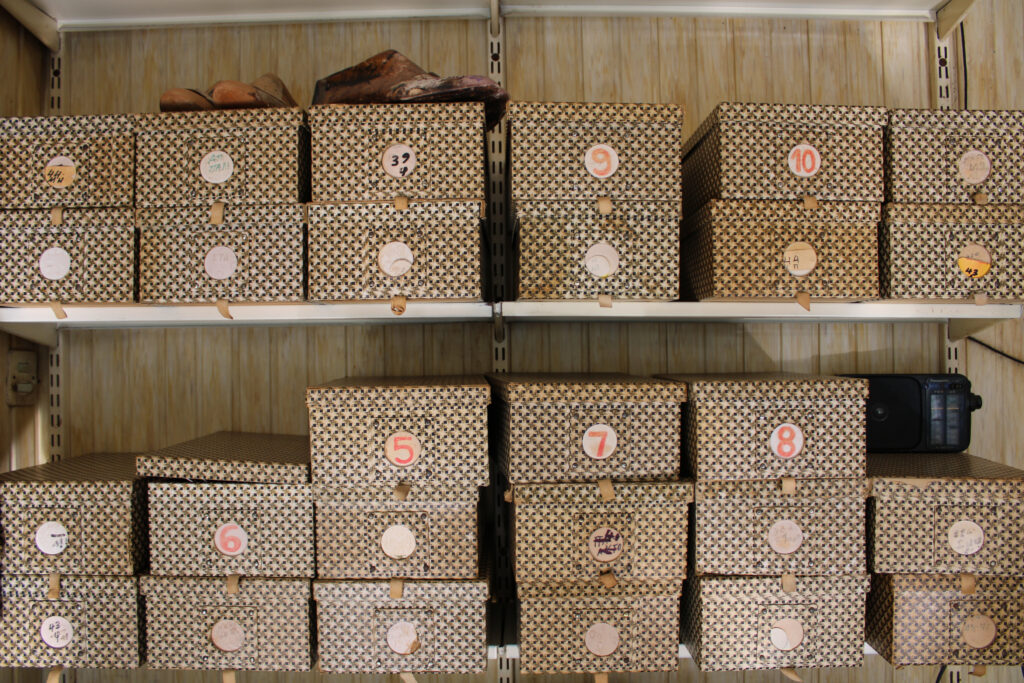(In)the steps of people – temporary exhibition in Volos
The research project 100memories presented, from 26 October to 5 November 2022, to the residents and visitors of the city of Volos the temporary exhibition entitled: “(In) the steps of people” at the shoe factory of Damianos Pavlioglou.
During the research process (on-site research) it was located in the neighborhood of Ioalkou in Volos. One of the first improvised, temporary settlements was created in the area with the arrival of the refugees. On 17 June 1921, the English steamship “Relchers” arrived at the port of Volos carrying 3,500 refugees from Nicomedia. The steamships “Polis de Toulon” with 2,000 refugees and “Evangelos” with 1,800 refugees from Yalova had preceded the arrival of the steamships. The refugees found shelter in the northern part of the city, on Iolku Street, where they were housed in makeshift wooden houses.
Two years later, exchangeable refugees of the Lausanne Treaty settled in the same area, expanding the refugee settlement of Iolku. In 1935 the settlement had about 2,500 inhabitants. Housing rehabilitation in Jolko developed into a complex and long-lasting issue, as was the case with urban refugee rehabilitation more generally. Gradual expropriations, land grants and loans for self-housing were the main processes for the transformation of the settlement. For almost two decades, the refugees’ makeshift houses coexisted with the newly built ones, as did the problems with the hope for better living conditions. Iolkos is on the margins of the refugee history of Volos, as the creation of Nea Ionia is the main historiographical example. The research team decided to emphasize the area through its ephemeral exhibition there, since at the same time the route they planned was about the Nea Ionia area. This is how Damianos Pavlioglou’s cobbler’s shop was located.
Damianos Pavlioglou was born in Volos in 1931. His parents, Prodromos and Kyriakoula, came from Ikonio in Asia Minor in 1924 with the exchangeable refugees of the Treaty of Lausanne. Damianos goes to school up to the second grade and when he is about 10 years old, in the early 40s, he goes to work as a glazier with a casket. When he is a little older, his mother sends him to learn the art of shoemaking from a good craftsman who had also come from Asia Minor, Karavasilis. He changed many shops, open-air, calico, stalls in bazaars and came to the shop where he worked until his death in the early 50s. It was in this space that it was decided to have the exhibition. An enclosed shoemaker’s shop, almost invisible in the city, was to be the storytelling space.
There was another reason that contributed to this. The history of the refugees of Volos is intertwined with industry. In the large factories the refugees found work, and at the same time their work built Volos as a major industrial centre. The history of refugees as industrial workers, however, overlooks other experiences of work: more fragmented, more precarious, more diffuse in space, but at the same time equally important for both the survival of refugees and the mutations of the urban fabric. Hawkers, tailors, hawkers, domestic workers, small shops make up another, overlooked but no less important aspect of refugee and urban history. Damianos Pavlioglou’s cobbler’s shop is a trace of this aspect of the refugee and urban experience.
In these small, “insignificant” spaces of everyday life, the big and “important” stories of uprooting, wars, political conflicts and economic disasters are reflected. At the same time, however, the stories of toil, hope and the struggle for survival are also reflected. In a reading that starts from the spaces of everyday life, refugees and migrants are understood as acting subjects who, through individual and collective practices, attempt to rebuild their lives – and consequently the (new) cities they inhabit. Space itself is a ‘museum’ of the self. The shack is an extension of the refugee house that the family took for its rehabilitation.
During the exhibition, classes were held in the space by the Department of Architecture, History-Archaeology and Social Anthropology, as well as the Department of Culture and Creative Industries of Volos, noting the importance of design. At the same time, in addition to the large number of visitors, guided tours were given to schools. The shoes that Damianos used to make were crossed with the stories of refugees and migrants and modern mobility.



